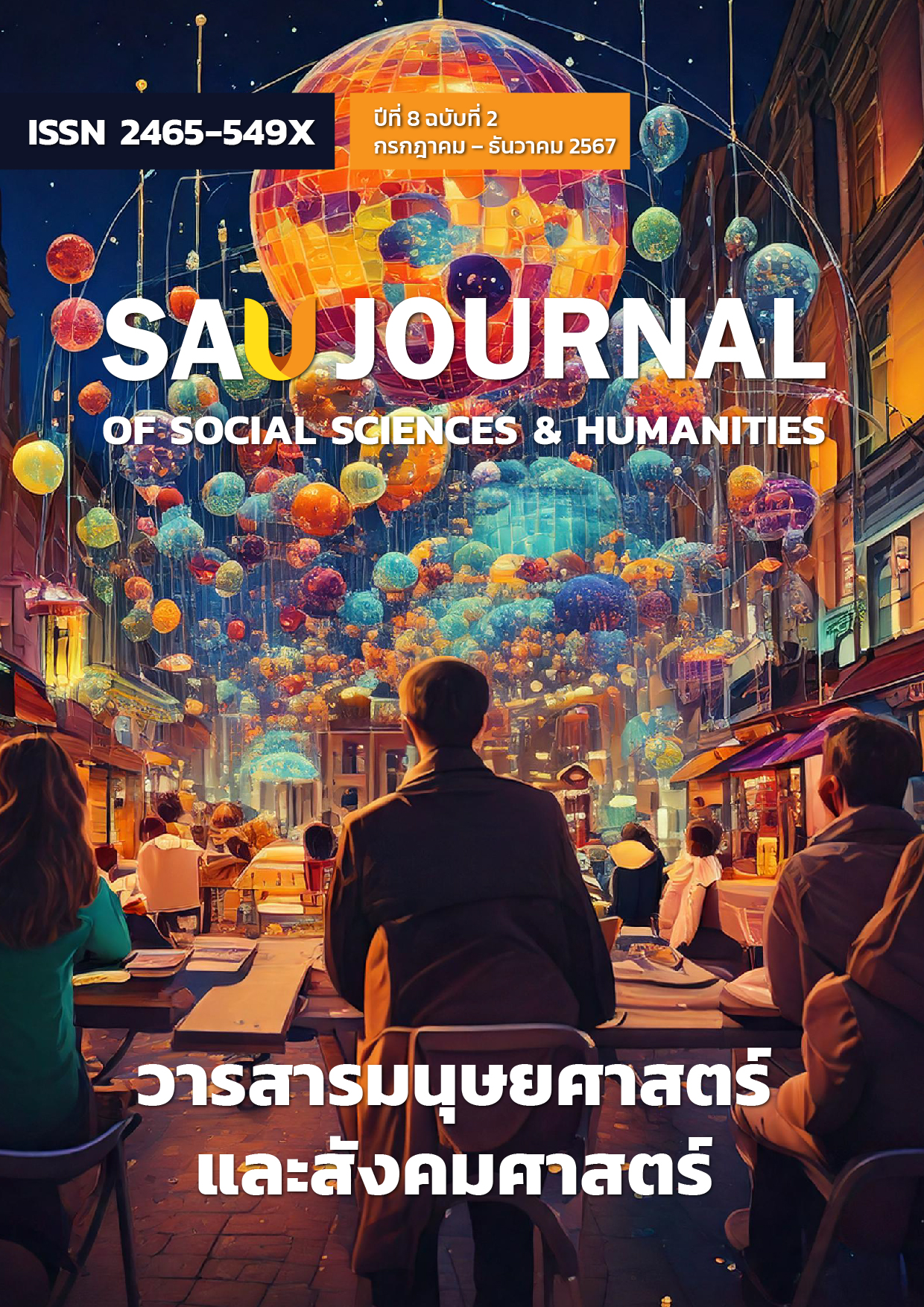Factors Influencing Organizational Commitment of Civil Servants in a Government Agency
Keywords:
Organizational Commitment, Work Characteristics Factors, Job Satisfaction FactorsAbstract
This study examines and compares the organizational commitment levels among civil servants working in a specific government agency, categorized by personal factors. Additionally, it aims to identify the factors affecting these civil servants' organizational commitment. The sample group consisted of 180 civil servants working in the government agency. The research instrument used was a questionnaire. The statistics used in the research included frequency, percentage, mean, standard deviation, t-test for group comparisons, one-way ANOVA, and multiple regression analysis.
The study found that the overall level of organizational commitment among civil servants in a government agency was high. A comparison of organizational commitment based on personal factors revealed that civil servants of different genders, ages, marital statuses, and lengths of service showed no statistically significant differences in their organizational commitment. However, civil servants with different educational levels, average monthly incomes, and job positions demonstrated statistically significant differences in organizational commitment at the 0.01 level, accounting for 51.3% (R² = 0.513) of the variance. Furthermore, work characteristics factors were significantly related to the organizational commitment of civil servants in the government agency at the 0.01 level. Two key factors were identified: teamwork and job challenge. The job satisfaction of civil servants working in a government agency was found to have a significant correlation with organizational commitment, accounting for 63.6% (R² = 0.636) at a statistical significance level of 0.01. A single factor influences this correlation: the sense of being valued by the organization.
References
กัลยา วานิชย์บัญชา. (2561). สถิติสถิติศาสตร์วิจัย SPSS. (พิมพ์ครั้งที่ 12). กรุงเทพฯ: สามลดา.
คำนาย อภิปรัชญาสกุล. (2560). การบริหารทรัพยากรบุคคล = Human resource management. กรุงเทพฯ: โฟกัส
มีเดีย แอนด์พับลิชชิ่ง.
เจษฎา นกน้อย. (2560). พฤติกรรมองค์การ. กรุงเทพฯ: สำนักพิมพ์แห่งจุฬาลงกรณ์มหาวิทยาลัย.
ธัญพิชชา สามารถ. (2564). ความผูกพันต่อองค์การของบุคลากรเทศบาลเมืองในจังหวัดชลบุรี.ชลบุรี: มหาวิทยาลัยบูรพา
ณิชาพร ฤทธิบูรณ์. (2562). ศึกษาปัจจัยที่มีอิทธิพลต่อความผูกพันองค์กรของบุคลากรภาครัฐในภาคตะวันออกเฉียงเหนือ ประเทศไทย. บทความวิจัย วารสารมนุษยศาสตร์และสังคมศาสตร์ มหาวิทยาลัยราชพฤกษ์, 5(1), 151-166.
เบญจวรรณ ฐิติกาล. (2562).ความผูกพันของพนักงานในองค์การ ส่งผลต่อประสิทธิภาพการทำงานในองค์การ
กรณีศึกษา โรงงานในอุตสาหกรรมอิเล็กทรอนิกส์แหลมฉบัง ชลบุรี. วารสารโครงการทวิปริญญาทางรัฐประศาสนศาสตร์และบริหารธุรกิจ
ประภัทสรณ์ ชำนาญเวช. (2564). ปัจจัยลักษณะงานและปัจจัยประสบการณ์ทำงานที่ส่งผลต่อความผูกพันของพนักงาน บริษัท เอฟ-เทค เอ็มเอฟจี. (ไทยแลนด์) จำกัด (สำนักงานใหญ่). วิทยาการจัดการวไลยอลงกรณ์ปริทัศน์, 2(1), 18-34
ปรารถนา หลีกภัย. (2563). ความผูกพันต่อองค์กรของบุคลากรภาครัฐในจังหวัดตรัง. วารสารบริหารธุรกิจและสังคมศาสตร์ มหาวิทยาลัยรามคำแหง, 3(3), 132-146.
พิพัฒน์ มีเถื่อน. (2562). ความพึงพอใจในการปฏิบัติงานของพนักงาน บริษัท ฮันนี่ เวลล์ อิเล็คทรอนิค แมธิเรียลส์ (ประเทศไทย) จำกัด. การค้นคว้าอิสระ บริหารธุรกิจมหาบัณฑิต,กรุงเทพมหานคร, มหาวิทยาลัยเกริก
มีเดช นาคะภากร. (2560). การศึกษาปัจจัยที่ส่งผลต่อความผูกพันในองค์กรของพนักงานส่วนตำบลในเขตอำเภอสากเหล็ก จังหวัดพิจิตร. รายงานสืบเนื่องการประชุมสัมมนาวิชาการ การนำเสนอผลงานวิจัยระดับชาติ เครือข่ายบัณฑิตศึกษา มหาวิทยาลัยราชภัฏภาคเหนือ ครั้งที่ 17. ณ ศูนย์วัฒนธรรมภาคเหนือตอนล่าง วังจันทน์ริเวอร์วิว มหาวิทยาลัยราชภัฏพิบูลสงคราม จังหวัดพิษณุโลก. หน้า 1304-1314.
อุทัย ศิริภักดิ์. (2559). ความพึงพอใจในการปฏิบัติงานของบุคลากรคณะวิทยาศาสตร์และเทคโนโลยี มหาวิทยาลัยราชภัฏมหาสารคาม. มหาวิทยาลัยราชภัฏมหาสารคาม
อรวรรณ เครือแป้น ปิยธิดา ตรีเดช วงเดือน ปั้นดี. (2556). ความผูกพันองค์กรของพยาบาลวิชาชีพในโรงพยาบาลเอกชนแห่งหนึ่ง, วารสารวิทยาลัยพยาบาลบรมราชชนนี กรุงเทพ, ฉบับที่ 29(2). 10-19
Krejcie, R. V. & Morgan, D. W. (1970). Determining Sample Size for Research Activities. Educational and Psychological Measurement, 30 (3), 607-610.





